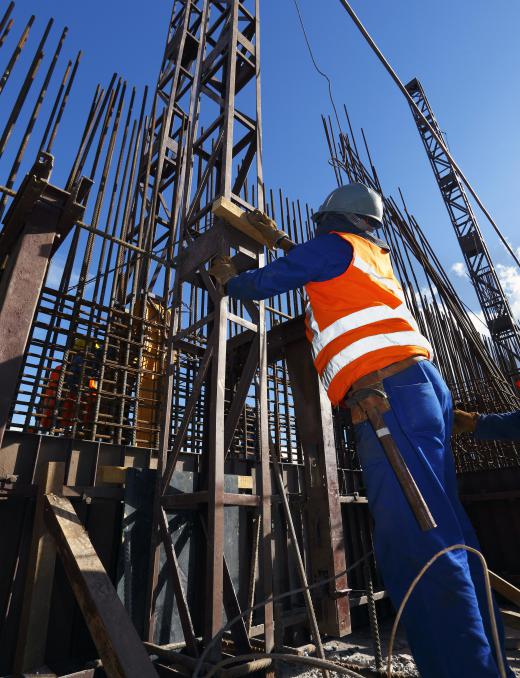In structural engineering, a concrete beam is a load-bearing unit that can be used to carry both horizontal and vertical loads. Known as reinforced concrete beams or reinforced cement concrete (RCC) beams, these beams are made by encasing steel bars, plates, or fibers within the concrete. Such steel reinforcing increases the beam strength, and allows the beam to cope with tensile stresses and resist bending. Without the steel reinforcing, the concrete beam would be brittle and break under the loads imposed on it.
The thermal expansion coefficient of concrete and steel is similar. This similarity ensures that there are little or no internal stresses caused by the thermal expansion and thermal contraction differences between the two materials. Such differences might have otherwise weakened the concrete beam. Another factor that allows for further efficient stress transmission between the steel and concrete is that when the wet cement that is applied to the steel dries, its surface corresponds exactly to that of the steel surface. To make the steel and the concrete bond better together, the steel is generally corrugated or roughened.
Encasing the steel within concrete protects it from the weather and prevents the steel from corroding. If the steel were to rust, it would expand and crack, and separate from the concrete encasing. This would again weaken the beam construction.

Concrete beams are widely used in contemporary building construction and in the construction of highway bridges. It is common to use prestressed concrete beams for bridges. These beams are made by stretching high strength steel tendons, casting the concrete around them, and then releasing the tendons when the concrete begins to cure. Rectangular cross sections and universal beam cross sections are commonly used in steel-frame building construction. The universal beam is also known as the I-beam, the wide-flange beam or the universal column.

Various mathematical methods, calculated with a beam calculator computer program, are used to determine the internal and external concrete beam forces, and the beam deflections. Beam forces are determined by the direct stiffness or displacement method, the moment distribution method and the flexibility method. Beam deflections are determined by slope deflection method and virtual work method. The Euler-Bernoulli beam equation is commonly used to carry out beam analysis of beam structures.
For a construction to be a structurally sound, it is important for engineers to calculate how much load a concrete beam can safely carry and the kinds of forces that will be imposed on it. Beam deflections are also sought for reasons of structural safety, as in reducing beam contact with building materials that may be brittle. The beam deflections may also be carried out to give the architecture a more aesthetically pleasing appearance; for instance, to ensure that there are no sags in the beams.
